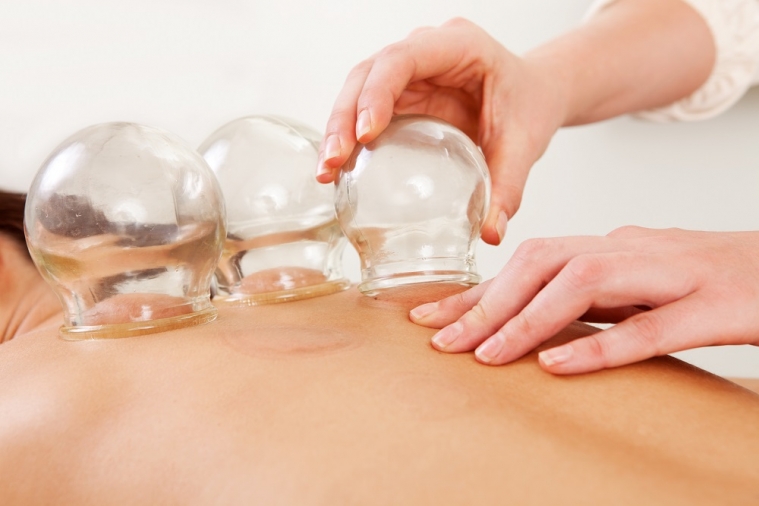
Cupping is a therapy in which a jar is attached to the skin surface to cause local congestion through the negative pressure created by introducing heat in the form of an ignited material.
In the ancient times in china, cupping method was called "horn method" The animal horn was used to dispel pus.
Along with continental development in clinical practice, the materials for making jars and the methods have been greatly improved.
The range of indications has been expanded, since this method is simple and the
therapeutic effect is good.
This
therapy was attracted with great attention and applied in a large scale by
broad masses, and also used as an auxiliary method of acupuncture and
moxibustion.
• TYPES OF JARS
1. Glass cup
Since the glass cup is transparent, the local congestion at the site for
moxibustion can be seen so as to control the treatment.
2.
Bamboo jar
Cut down a section of bamboo 3-7 cm in diameter and 8-10 cm in length, forming
a cylinder shaped as a drum. One end is used as the bottom, and the other as
the opening. The rim of the jar should be made smoothly. The bamboo jar is
light, economical, easy to make and available in many places
• INDICATIONS
The cupping method has the function of warming and promoting the free flow of
qi and blood in the meridians, dispelling cold dampness, diminishing swelling
and pains.
In clinics, the cupping method is mainly used to treat bi syndrome
caused by wind dampness, such as pain of the low back, shoulders, and leg,
gastrointestinal disorders such as stomachache, vomiting, and diarrhea, and the
lung disease such as cough and asthma.
The cupping method combined with bloodletting is suitable to treat acute
sprains accompanied by blood stasis.
• PRECAUTIONS
1. The patient should select a comfortable position.
Cups in different sizes are used according to the cupping location.
Generally, the areas where the muscle is abundant and elastic, free from hairs and bone ridges are selected.
2. The burning flame should be stronger enough to create a vacuum.
Hold the cup with the rim close to the local area and cup it to the skin rapidly and deftly, otherwise, there will be no therapeutic effects.
3. It is not advisable to apply cupping to the patient with skin ulcer, edema,
or on an area
